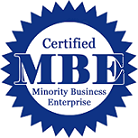Cloud transitions, such as moving data and crucial business procedures to GCP, AZURE and AWS, are gaining fame, recognition and apt spotlight. Proper planning is the key for any business to get success without having disturbed their business procedures.
Cloud transition? What on earth is that?
How do you do that?
These must be the questions that get triggered in the minds of many business owners when they come to hear about this technology for the first time. If you too happen to be a part of that clan, here’s a chance to untangle the implication of the trend and how it is making an impact on the business world. Precisely, you will get to know how you should move on from the pre-cloud state to the post-cloud state. The journey is an enormous one. If you are determined to make the journey, you will be required to go through three crucial steps. Those steps are
- Application
- Network
- Security
These three stages are integral parts of any enterprise-level cloud transformation. Once you have got the edge of cloud transition for your business, you are supposed to achieve a series of business benefits for sure. The perks would include the following:
- The cumulative cost of the ownership would be curtailed.
- More opportunities for innovation will be on the cards.
- Delivery patterns and timeline will amp up.
- Your business processes will be more agile as well as flexible.
- You will be in a better position to handle resource demands.
- You will gain the edge of cloud scalability.
- Understanding cloud economics would be more precise.
Now, the million Dollars worth of question is how you should be able to carry out the transition process without jeopardising or compromising your standard business operations. Right? So, here’s what you want to follow up on.
Suitable Workarounds to Spruce up Seamless Cloud Transition
If you are looking to shift your workspace or existing workload into a hybrid or multi-cloud infrastructure, these are the few things that you need to give serious thought to.
Cloud-first commitment
To set things rolling, you need to have a positive mindset about the cloud transition which you intend to initiate. Make sure that you keep your business-specific applications either in a private cloud or in a public cloud. In many cases, making your move for an on-site or premise based private cloud could be a great choice.
Figure out the data mapping, and inner workings
When you are dealing with complex and intricate infrastructures such as Google, Azure as well as AWS, you will need to have a very strong understanding of different stages of inner working as well as data mapping. You need to unearth the right transition functions through a hybrid cloud system only. To make things run smoothly, you will need to harbour a crystal conception of how you should combine the private cloud along with the public cloud. The procedure of cloud migration might sound complex but it’s not that complex and critical when you endeavour to create the merger in real-time. Essentially, it is not too difficult for two divergent cloud networks to come together or share a space to trigger an enhanced, positive and integrated impact.
Continuous compliance would be essential
This act is indeed essential if you have to make sure that you remain in control of whatever is happening with the data usage, cloud integration and implementation. You will need to monitor every change, every movement and progress. To carry out the monitoring part in an uninterrupted manner you have to put appropriate software systems in place so that these systems can track and monitor every bit of the cloud transition which is going on. The software systems should be programmed to keep a close tab on storage configurations as well.
Execute proper governance gap assessment activities
Enforcing a solid governance gap assessment is something that is deemed to be integral to the success of the cloud migration and transition you are looking at. To attain the best outcomes, you should form a substantial impression about CCM or Cloud Control Matrix. CCM can provide you with a ready base of references to deal with governance gap assessment acts in a quick period.
Conclusion
So, coming to the fag end of the discussion we might have been able to lay stress on the fact that a switch to the cloud ambience can definitely give your business a competitive edge which you have always aspired for. Cloud architecture is such that it would make room for seamless transition and integration without having caused any harsh impact on your business procedures. An apt, effective and prompt cloud transition process can give a prominent uplift to the existing processes and rope in modifications which would be good enough in terms of bolstering the inner workings, governance as well as security protocols.




























